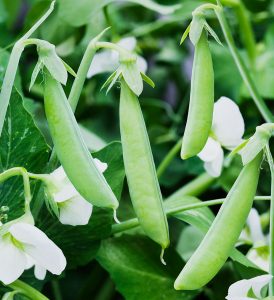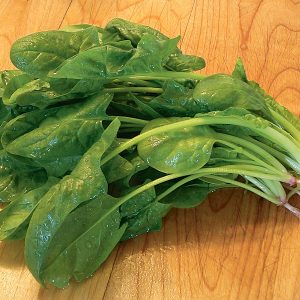

Heirloom. Best known as an ingredient in pies and tarts, rhubarb is a perennial with edible celery-like stalks. The leaves contain high concentrations of oxalic acid and should not be eaten. While rhubarb is sometimes eaten raw with sugar sprinkled on it, most uses for this plant are in recipes where its tart flavour is a unique addition. Because it is perennial, choose a permanent spot in your garden for rhubarb. Plant so that crowns are 4 inches deep.
- Light Full sun
- Plant type Perennial
- Stalk size 18 to 24 inches
- Matures Second year
- Plant spacing 36 to 60 inches apart
- Plant size: Up to 4 feet wide and 4 feet tall
Light requirements Full sun for best yields.
Planting Space 18 to 24 inches apart. Tuck crowns 4 inches deep.
Soil requirements Rhubarb needs moist but well-drained, nutrient-rich soil. Amend soil 12 inches deep with compost or well-rotted manure prior to planting. Use raised beds in heavy clay soil.
Water requirements Keep soil moist throughout the growing season. Mulch soil to reduce water evaporation, but wait until summer heat arrives before covering it.
Frost-fighting plan Mature rhubarb can be damaged by light frost (28º F to 32º F) in fall. If a hard frost (temperatures below 28º F) occurs in late spring, don’t eat stalks if they’re mushy. In this condition, poisonous oxalic crystals from leaves may have moved into stalks. Firm, upright stems are safe to eat.
Common issues Established plants need to be divided every 5 to 10 years in early spring or fall. Crowded, thin stems are the clue it’s time to divide. Remove flower stalks as soon as they appear, as they steal energy that should be directed to roots and future stalk formation. Rhubarb is virtually pest-free, though occasionally rhubarb curculio attacks stems. Crown rot may occur in poorly drained soil. This is a serious disease; infected plants should be burned. Also watch out for leaf spot.
Harvesting Start harvesting the second year after planting, removing only a few stalks from each plant. From the third year on, harvest stems freely. Never remove more than one-third to one-half the stalks from any one plant during any one harvest. Pick longer, reddish stems. Grasp the stalk near the base and pull it upwards, twisting as you pull, or use a sharp knife to slice stems from the plant. Cut as close to the crown as possible without damaging it. Remove the leafy portion and stem base, leaving only the colored stalk.
Storage For best quality, use freshly harvested stalks. Cut stems keep up to 1 week in the refrigerator, although crispness diminishes with storage. Refresh crispness by standing stored stems in water before using; flavor will be slightly diluted.



